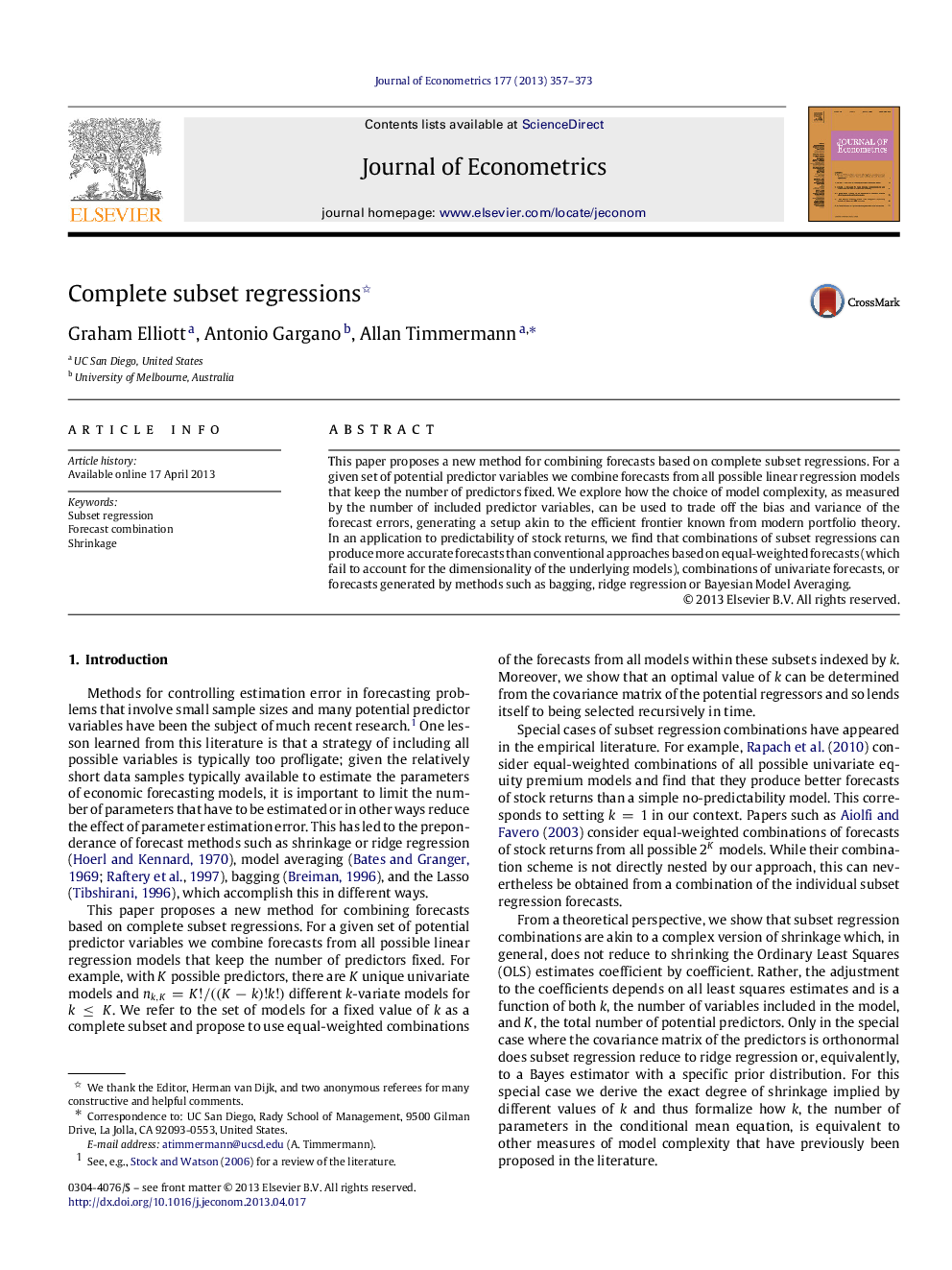| Article ID | Journal | Published Year | Pages | File Type |
|---|---|---|---|---|
| 5096278 | Journal of Econometrics | 2013 | 17 Pages |
Abstract
This paper proposes a new method for combining forecasts based on complete subset regressions. For a given set of potential predictor variables we combine forecasts from all possible linear regression models that keep the number of predictors fixed. We explore how the choice of model complexity, as measured by the number of included predictor variables, can be used to trade off the bias and variance of the forecast errors, generating a setup akin to the efficient frontier known from modern portfolio theory. In an application to predictability of stock returns, we find that combinations of subset regressions can produce more accurate forecasts than conventional approaches based on equal-weighted forecasts (which fail to account for the dimensionality of the underlying models), combinations of univariate forecasts, or forecasts generated by methods such as bagging, ridge regression or Bayesian Model Averaging.
Keywords
Related Topics
Physical Sciences and Engineering
Mathematics
Statistics and Probability
Authors
Graham Elliott, Antonio Gargano, Allan Timmermann,
